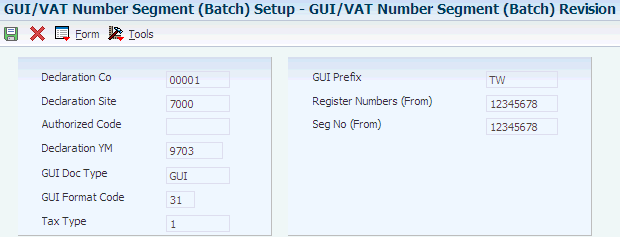

The same applies to the purchaser, and the purchase price is a “vatable” expense and thus warrants registration.
#Vat rate against d1 form registration
The sale of commercial property is in itself a taxable supply and thus the registration thresholds apply with the sale price determining the threshold. It is not only companies that have the liability to register for VAT individuals who own or sell commercial property should also register for VAT A seller would have been mandated to register for VAT in the event that the annual rental exceeded the mandatory tax registration threshold of Dh375,000 per year. However, little thought is often given to the same principle when a commercial property is sold and the seller must issue a tax invoice for the purchase price.īoth seller and purchaser must be registered for VAT. It is self-explanatory that a landlord of a commercial property will issue a tax invoice when billing the annual rent. Commercial property transactions, both leases and purchases, are not exempt from VAT and both tenants and purchasers are obliged to pay VAT on either the rent or the purchase price. Also, Revenue may refuse to issue tax clearance certificates until the RTD has been filed.Since the implementation of the value-added tax (VAT) in January, there have been numerous discussions explaining its effects on real estate.
#Vat rate against d1 form Offline
In contrast to VAT returns, there is no option to complete a ROS Offline file in respect of the RTD and therefore the return must be completed ‘live’ on ROS.įailure to file an RTD can affect the cash flow of your business as tax refunds, under any tax head, can be withheld until the RTD has been filled. We would recommend that a reconciliation of the RTD with the VAT returns is carried out because it is quite likely that one will be carried out by Revenue and if there are discrepancies Revenue may choose to audit your business. It is important therefore to ensure that your RTD reconciles with the VAT returns made to Revenue in the period which it covers. Revenue have further emphasised this point in recent guidance by stating that when a Nil RTD is filled it will be rejected when there have been positive values in the VAT returns for the accounting period. The RTD is essentially used as an audit tool to assist Revenue in verifying the accuracy of your periodic VAT returns filled during the accounting period. The Return is, as mentioned, a statistics return, and as such does not of itself carry an obligation to pay any VAT liability. Therefore if you have an accounting period which ends on the 31st of December 2018 your RTD is due to be filed by the 23rd of January 2019. The RTD must be filed on the 23rd of the month following the end of the accounting period.

Potential Impact of the RTD on Business Activities


For example the net total sales of goods and services supplied for Question 1 will be broken down into the various VAT rate categories (9%, 13.5%, 23%, etc.) and included in the return based on the total for each rate. The fields on the return are completed using the net sales or purchase figures at the various VAT rates applicable to the relevant transactions.


 0 kommentar(er)
0 kommentar(er)
